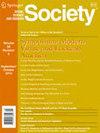大流行后室内产品设计师在提高工艺和家具工匠福利中的作用
IF 1.4
4区 社会学
Q2 SOCIAL SCIENCES, INTERDISCIPLINARY
引用次数: 0
摘要
新冠肺炎疫情后,创意产业有望带动印尼经济增长。丰富的当地材料和熟练的人力资源是提高设计产品销售价值需要优化管理的两大优势。这一流行病严重影响了爪哇家具和手工艺品工匠的福利。本文旨在展示室内产品设计师(IPDs)在大流行后改善工匠社会经济福利的过程和作用。ipd与中小企业、工匠、私营企业家、政府、出口商和协会合作,应对大流行病后的脆弱性,以制定可持续社区福利的政策和战略。这个IPDs的作用主要集中在利用水葫芦和藤条作为室内产品的材料,在当地和全球市场上被接受。各发展中国家在合作和统一各自的愿望和利益方面面临挑战。该研究采用了Kelley的设计思维方法,实现了移情、定义、构思、原型和测试阶段。会议探讨了中小企业工匠生产的商品的最新信息、现有的优势和劣势,以及对印度尼西亚、亚洲和欧洲发展中市场问题的深入研究。然后根据原材料的可用性、工匠的生产能力以及所使用的工具和技术的支持来调整最终的设计。生产过程涉及政府和工业援助,以支持机器和生产技术的需要。在国内外进行了市场测试,以确定该产品的市场反应。在市场反应良好的情况下,希望政府和行业协会能制定政策,支持共同努力,为社会,特别是工匠群体的社会经济福利制定战略。本文章由计算机程序翻译,如有差异,请以英文原文为准。
The Role of Interior Product Designers in Improving the Welfare of Craft and Furniture Artisans after Pandemic
The creative industry is expected to drive economic growth in Indonesia after the COVID-19 pandemic. Abundant local materials and skilled human resources are two major strengths that need to be optimally managed to increase the selling value of design products. The pandemic has significantly impacted the welfare of furniture and handicraft artisans in Java. This paper aims to demonstrate the process and role of interior product designers (IPDs) in improving the socio-economic welfare of artisans after the pandemic. IPDs collaborated with Small and Medium Enterprises (SMEs), artisans, private entrepreneurs, governments, exporters, and associations to deal with vulnerabilities after the pandemic to achieve the development of policies and strategies toward sustainable community welfare. This IPDs role mainly focused on utilizing water hyacinth and rattan as the material for interior products to be accepted in local and global markets. The IPDs faced challenges in collaboration and unification of aspirations and interests between each party. The research used Kelley’s design thinking method, implementing the empathize, define, ideate, prototype, and test stages. The latest information on commodities produced by SME artisans, the existing advantages and disadvantages, and in-depth studies of developing market issues in Indonesia, Asia, and Europe were explored. The resulting design was then adjusted to the availability of raw materials, the production capabilities of the artisan, as well as the support of tools and technology used. The production process involved the government and industrial assistance in supporting the needs of machinery and production technology. Market tests at home country and abroad were conducted to determine the market response to the product. With a good market response, it is hoped that there will be policy development from the government and industry associations to support joint work to achieve a strategy for the socio-economic welfare of the community, especially groups of artisans.
求助全文
通过发布文献求助,成功后即可免费获取论文全文。
去求助
来源期刊

Society
Multiple-
CiteScore
1.30
自引率
11.10%
发文量
132
审稿时长
12 weeks
期刊介绍:
Founded in 1962, Society enjoys a wide reputation as a journal that publishes the latest scholarship on the central questions of contemporary society. It produces six issues a year offering new ideas and quality research in the social sciences and humanities in a clear, accessible style.
Society sees itself as occupying the vital center in intellectual and political debate. Put negatively, this means the journal is opposed to all forms of dogmatism, absolutism, ideological uniformity, and facile relativism. More positively, it seeks to champion genuine diversity of opinion and a recognition of the complexity of the world''s issues.
Society includes full-length research articles, commentaries, discussion pieces, and book reviews which critically examine work conducted in the social sciences as well as the humanities. The journal is of interest to scholars and researchers who work in these broadly-based fields of enquiry and those who conduct research in neighboring intellectual domains. Society is also of interest to non-specialists who are keen to understand the latest developments in such subjects as sociology, history, political science, social anthropology, philosophy, economics, and psychology.
The journal’s interdisciplinary approach is reflected in the variety of esteemed thinkers who have contributed to Society since its inception. Contributors have included Simone de Beauvoir, Robert K Merton, James Q. Wilson, Margaret Mead, Abraham Maslow, Richard Hoggart, William Julius Wilson, Arlie Hochschild, Alvin Gouldner, Orlando Patterson, Katherine S. Newman, Patrick Moynihan, Claude Levi-Strauss, Hans Morgenthau, David Riesman, Amitai Etzioni and many other eminent thought leaders.
The success of the journal rests on attracting authors who combine originality of thought and lucidity of expression. In that spirit, Society is keen to publish both established and new authors who have something significant to say about the important issues of our time.
 求助内容:
求助内容: 应助结果提醒方式:
应助结果提醒方式:


